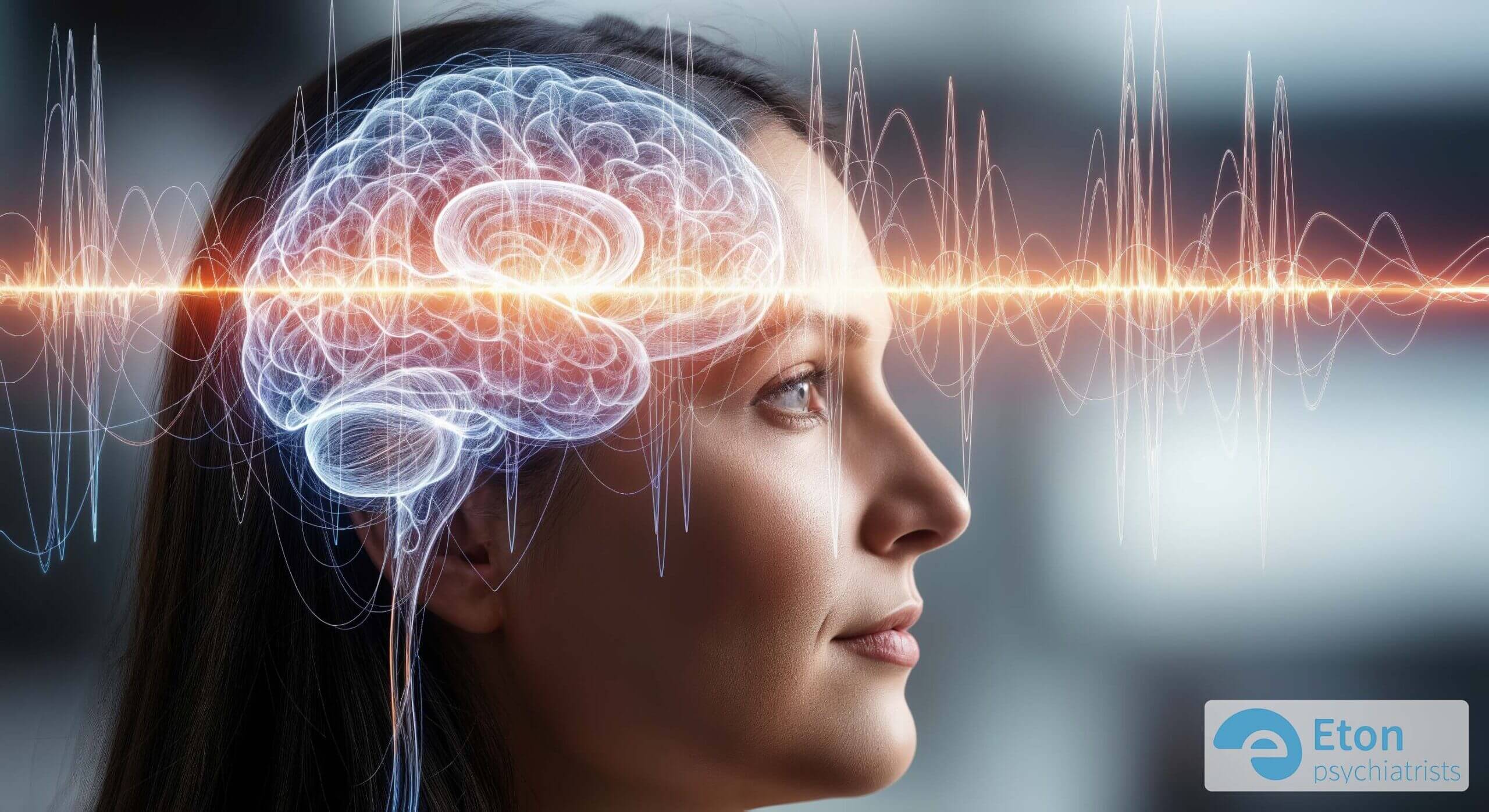
Can Stress Improve Focus in ADHD?
A Deep Dive into the Impact of Stress on Attention in Neurodivergent Brains
For many individuals with ADHD, there’s a familiar pattern: hours of struggling to concentrate, only to discover that when a deadline looms, productivity suddenly skyrockets. While stress typically hinders cognitive function in most people, those with ADHD often experience the opposite enhanced focus, increased motivation, and greater mental clarity under pressure.
This counterintuitive phenomenon raises a fascinating question: Can stress or more specifically, urgency actually improve focus in individuals with ADHD? And if so, what risks might this entail?
In this article, we examine the neurobiological underpinnings of this paradox, the short-term benefits stress may provide, and the long-term consequences that often go unrecognized. We’ll also explore how these dynamics manifest in different contexts, including the unique ways women with ADHD experience and manage stress. Throughout, we’ll offer evidence based strategies to effectively manage ADHD without relying on stress driven performance.
The Dopamine Connection: Why Stress Sometimes “Works”

ADHD fundamentally involves a neurochemical imbalance, particularly affecting dopamine a critical neurotransmitter for attention regulation and reward processing. In everyday, low-stimulation environments, the ADHD brain typically doesn’t produce sufficient dopamine to maintain attention. However, under acute stress, such as an impending deadline, dopamine levels can surge enough to temporarily enhance focus.
This “deadline effect” is well-documented among ADHD individuals. It’s not merely anecdotal but has solid foundations in neurobiology. Nevertheless, while urgency may temporarily sharpen attention, it represents an unsustainable approach with considerable drawbacks.
For more detailed information on how ADHD impacts daily functioning, particularly in less structured environments, see our comprehensive guide on What’s ADHD? which explores the condition’s fundamental aspects.
Short-Term Gains vs. Long-Term Costs
While stress induced focus might seem advantageous, it often fosters dependency on crisis situations. Over time, habitually “thriving under pressure” contributes to chronic stress, emotional exhaustion, and burnout especially in individuals already predisposed to anxiety or mood disorders.
It’s crucial to recognize that what feels like focused concentration under pressure may actually represent hyperarousal rather than genuine, sustainable attention. This distinction becomes particularly significant when ADHD coexists with emotional regulation difficulties or Rejection Sensitivity Dysphoria (RSD) a condition where perceived criticism or failure triggers disproportionately intense emotional reactions. Our article on Navigating Rejection Sensitivity explores how these emotional patterns can complicate task performance under stress.
A word of caution: consistently relying on pressure to function often leads to a destructive cycle of procrastination, panic, and depletion. Over time, this pattern can obscure the need for more effective support and sustainable coping strategies.
Simple Techniques for Managing Stress with ADHD

While the relationship between stress and ADHD is complex, several straightforward techniques can help individuals manage stress levels more effectively:
- Regular exercise: Research consistently shows that physical activity is one of the most effective stress-management tools for individuals with ADHD. Exercise naturally increases dopamine, norepinephrine, and serotonin levels in the brain, helping to improve attention and reduce anxiety. As little as 20 minutes of moderate activity can have immediate benefits. Our detailed article on ADHD and Exercise: Move to Focus explores how different types of physical activity can be integrated into daily routines for maximum benefit.
- Mindful breathing: Practice 4-7-8 breathing (inhale for 4 counts, hold for 7, exhale for 8) to activate the parasympathetic nervous system and reduce physiological stress responses.
- Body scanning: Take a moment to mentally scan your body from head to toe, identifying areas of tension, and consciously releasing that tension.
- Nature exposure: Spending just 20 minutes in a natural environment can lower cortisol levels and restore attention capabilities.
- Structured breaks: Implement the Pomodoro technique (25 minutes of focused work followed by a 5-minute break) to prevent overwhelm and maintain sustainable productivity.
- Task prioritization: Use a simple ranking system (must do, should do, could do) to reduce decision fatigue and focus on what truly matters.
It’s important to note that while these techniques can be helpful, everyone’s experience with ADHD is unique. For personalized and more comprehensive stress management strategies, consulting with a specialist is strongly recommended. Professional guidance can help tailor approaches to your specific needs and circumstances.
Women, Masking, and Pressure as a Coping Mechanism

For women with ADHD particularly those diagnosed in adulthood the relationship between stress and focus often becomes even more complex. Many women report using perfectionism or chronic overachievement to “mask” their difficulties. In these cases, pressure becomes not just a focusing tool but a survival mechanism, contributing to internalized stress and mental health challenges including anxiety and burnout.
If you’re interested in how ADHD presents differently in women, and why many remain undiagnosed for years, our article on Understanding ADHD in Women provides valuable insights into symptoms, diagnosis challenges, and treatment approaches.
The Risk of Normalizing Dysfunction
The fact that stress occasionally enhances attention doesn’t make it healthy. The real danger lies in normalizing dysfunction building one’s lifestyle or identity around “performing in crisis.” Over time, this pattern can mask the genuine need for proper diagnosis, structure, and support.
For adults questioning whether they might have undiagnosed ADHD particularly if they’ve long depended on pressure to function our article Am I Too Old to Be Diagnosed with ADHD? addresses common concerns and explains why there’s no age limit for diagnosis.
Managing ADHD Without the Burnout
Long-term focus and performance in ADHD are best supported through proactive strategies rather than reactive stress. Effective approaches include:
- External structure: utilizing planners, reminders, and physical cues
- Task breakdown: dividing large projects into smaller, time-bound steps
- Environment design: minimizing distractions and creating low-stress focus zones
- Mindful rest: recognizing when the brain requires downtime to prevent cognitive fatigue
When consistently implemented, these strategies reduce reliance on crisis-mode and support more stable attention without compromising mental health.
For parents navigating these challenges in children, our comprehensive ADHD assessment services for children provide guidance on recognizing symptoms and accessing appropriate support.
A Final Note: Don’t Wait for Pressure to Push You Forward
If you find yourself performing well only under pressure, consider this a warning sign rather than a strength. While urgency may occasionally enhance focus, it typically conceals underlying struggles that deserve proper attention. ADHD affects not just concentration but how the brain processes motivation, stress, and structure.
For anyone experiencing these patterns, exploring what lies beneath is worthwhile. You needn’t wait for another crisis to take action. Reading personal stories like RJ’s journey to ADHD and autism diagnosis can provide hope and perspective on the transformative impact of proper diagnosis and treatment.
It’s also important to consider the long-term health implications of stress and ADHD medication. Our article on ADHD and cardiovascular health examines how both the condition itself and its treatments may affect heart health, highlighting the importance of comprehensive care.
Comprehensive assessments and supportive interventions are available for both adults and children. With proper diagnosis and tailored treatment approaches, individuals with ADHD can develop sustainable strategies for success that don’t rely on the double-edged sword of stress-induced focus.



